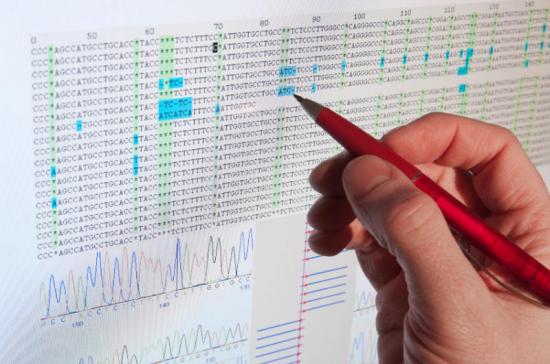基因编辑的能力像约翰内斯古腾堡(Johannes Gutenberg)印刷机一样具有革命性、时下可用性以及潜在的无限应用性。大多数DNA编辑工具处理速度慢、价格昂贵以及操作复杂,正像古腾堡发明一样,凝聚智慧的技术在起步阶段都是如此。如今,哈佛大学研究人员在基因组水平上开发出像文字处理器一样快捷、简单的编辑工具,通过搜索和替换的遗传操作对活体细胞进行基因组编辑。与上一代不同的是,这些编辑的基因组被植入新的细胞株中。
哈佛大学医学院遗传学教授 George Church与麻省理工学院副教授 Joe Jacobson合作开展这项研究,Church称,回报的获取不是对已存在事物简单的复制,而是要从根本上和功能上改变它。
Church还说,这一改变有3个目标:第一,通过编码新的、有用的多肽链,增加细胞的功能;第二,引进保护机制,防止基因改造型和野生型生物之间交叉感染;最后,相关目标是重编病毒代码,从而获取多病毒抗性。在细菌培养产业(如药品和能源产业),病毒可危害高达20%的培养细菌。
这篇论文预计将在7月15日Science期刊上发表。研究人员在32种大肠杆菌中替换遗传密码,“哄骗”部分编辑的细胞株朝着单一细胞系方向进化(在这一细胞系中314个遗传密码发生替换)。
在遗传密码子中,大多数密码子指定氨基酸种类——蛋白质构件分子,但是,一些密码子可以告诉细胞何时停止往蛋白质链添加氨基酸,这类终止密码子是哈佛大学研究人员的锁定目标。TAG终止密码子在大肠杆菌基因组中出现的次数最少,仅有314次,因而TAG密码子成为替换的首选。利用多重基因组自动改造(MAGE)技术,研究小组在活的大肠杆菌中把TAG密码子替换成TAA终止密码子(2009年该小组开发出MAGE技术平台,称之为进化机器用于加速活体细胞的定向遗传改造)。
MAGE平台生成了一类细胞,在某一个细胞中TAA密码子取代部分而非全部的TAG密码子,而研究小组却生成了涵盖全部TAA替换的32个细胞株。利用细菌本能的接合作用,研究人员诱导细胞大范围地转移改造的基因(发生TAA替换事件)。这一新技术称为接合组装基因组改造技术(CAGE)。整个过程有点类似NBA的季后赛,从16对到8对,再到4对、2对和1对,每一轮的获胜者拥有更多的TAA密码子和更少的TAG。
因急于分享他们的技术,研究小组在CAGE到达“半决赛”时就发表了他们的结果。结果显示最终的4个菌株很健康。研究人员确信他们能够创建出一个TAG密码子被全部去除的菌株。然后,他们打算去除能阅读TAG基因的细胞器,空出一个密码子以供新用途,如编码一个新的氨基酸。
耶鲁大学生物学副教授Farren Isaacs称,我们正在检验几十年前遗传密码子保守性的旧理论,并能在全基因组水平上改变遗传密码。
工程仿生学研究所Church实验室 Harris Wang称,我们正在尝试让人们接受这一观念——基因组具有非常高的可塑性和编辑性。

以下是英文原文:
Editing the Genome: Scientists Unveil New Tools for Rewriting the Code of Life
The power to edit genes is as revolutionary, immediately useful and unlimited in its potential as was Johannes Gutenberg's printing press. And like Gutenberg's invention, most DNA editing tools are slow, expensive, and hard to use -- a brilliant technology in its infancy. Now, Harvard researchers developing genome-scale editing tools as fast and easy as word processing have rewritten the genome of living cells using the genetic equivalent of search and replace -- and combined those rewrites in novel cell strains, strikingly different from their forebears.
"The payoff doesn't really come from making a copy of something that already exists," said George Church, a professor of genetics at Harvard Medical School who led the research effort in collaboration with Joe Jacobson, an associate professor at the Media Lab at the Massachusetts Institute of Technology. "You have to change it -- functionally and radically."
Such change, Church said, serves three goals. The first is to add functionality to a cell by encoding for useful new amino acids. The second is to introduce safeguards that prevent cross-contamination between modified organisms and the wild. A third, related aim, is to establish multi-viral resistance by rewriting code hijacked by viruses. In industries that cultivate bacteria, including pharmaceuticals and energy, such viruses affect up to 20 percent of cultures. A notable example afflicted the biotech company Genzyme, where estimates of losses due to viral contamination range from a few hundred million dollars to more than $1 billion.
In a paper scheduled for publication July 15 in Science, the researchers describe how they replaced instances of a codon -- a DNA "word" of three nucleotide letters -- in 32 strains of E. coli, and then coaxed those partially-edited strains along an evolutionary path toward a single cell line in which all 314 instances of the codon had been replaced. That many edits surpasses current methods by two orders of magnitude, said Harris Wang, a research fellow in Church's lab at the Wyss Institute for Biologically Inspired Engineering who shares lead-author credit on the paper with Farren Isaacs, an assistant professor of molecular, cellular and developmental biology at Yale University and former Harvard research fellow, and Peter Carr, a research scientist at the MIT Media Lab.
In the genetic code, most codons specify an amino acid, a protein building block. But a few codons tell the cell when to stop adding amino acids to a protein chain, and it was one of these "stop" codons that the Harvard researchers targeted. With just 314 occurrences, the TAG stop codon is the rarest word in the E. coli genome, making it a prime target for replacement. Using a platform called multiplex automated genome engineering, or MAGE, the team replaced instances of the TAG codon with another stop codon, TAA, in living E. coli cells. (Unveiled by the team in 2009, the MAGE process has been called an evolution machine for its ability to accelerate targeted genetic change in living cells.)
While MAGE, a small-scale engineering process, yielded cells in which TAA codons replaced some but not all TAG codons, the team constructed 32 strains that, taken together, included every possible TAA replacement. Then, using bacteria's innate ability to trade genes through a process called conjugation, the researchers induced the cells to transfer genes containing TAA codons at increasingly larger scales. The new method, called conjugative assembly genome engineering, or CAGE, resembles a playoff bracket -- a hierarchy that winnows 16 pairs to eight to four to two to one -- with each round's winner possessing more TAA codons and fewer TAG, explains Isaacs, who invokes "March Madness."
"We're testing decades-old theories on the conservation of the genetic code," Isaacs said. "And we're showing on a genome-wide scale that we're able to make these changes."
Eager to share their enabling technology, the team published their results as CAGE reached the semifinal round. Results suggested that the final four strains were healthy, even as the team assembled four groups of 80 engineered alterations into stretches of the chromosome surpassing 1 million DNA base pairs. "We encountered a great deal of skepticism early on that we could make so many changes and preserve the health of these cells," Carr said. "But that's what we've seen."
The researchers are confident that they will create a single strain in which TAG codons are completely eliminated. The next step, they say, is to delete the cell's machinery that reads the TAG gene -- freeing up the codon for a completely new purpose, such as encoding a novel amino acid.
"We're trying to challenge people," Wang said, "to think about the genome as something that's highly malleable, highly editable."
This research was funded by U.S. Department of Energy and the National Science Foundation.


